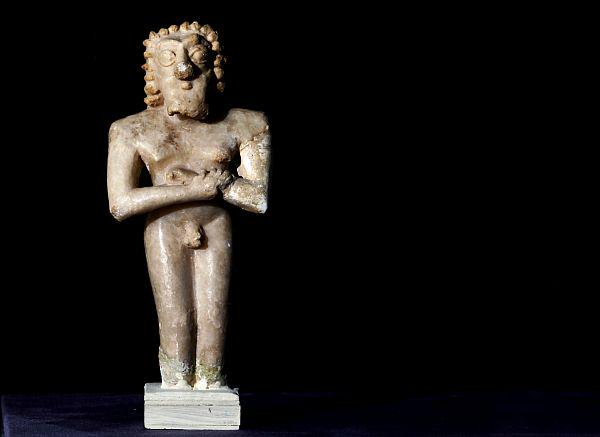
The statuettes are made from alabaster, which means from a soft and generally translucent rock appropriate for making decorative objects. The value of the statuettes has not yet been assessed. A criminal investigation is underway and photographs of the found artifacts are still withheld from the public.
Curator Peter Turk from the Archeology Department at the National Museum works on the prehistoric period. He told Radio Slovenija 1 that out of the three found statuettes "two of them are very similar". "We're dealing with votive statuettes which were common in Mesopotamia in the early Sumerian period - that means in the second quarter i.e. in the middle of the third century B.C., more precisely between the years 2.700 and 2.500 Before the Common Era." According to Turk, such statuettes were always connected to shrines.
Statuettes with emphasized wide open eyes
It is not possible to establish whether the three statuettes belonged to any museum collection as there are no inventory numbers on them, although they, of course, could have also been removed. Turk compares the role of the votive statuettes in Sumerian shrines to that of the Buddhist praying wheels, which pray alongside those actually praying or even instead of them.
Easier to dig in archeological sites than make imitations
Turk does not completely reject the possibility that the artifacts may be imitations - regarding the third statuette that may very well be the case as it is made with considerably less skill than the remaining two. Turk also stresses that such statuettes in the regions of Iraq and Syria are extremely common and therefore do not "reach soaring prices" on the black market. He says they can reach prices of a few thousand euros.
The statuettes temporarily residing in the National Museum
When state authorities find and confiscate artifacts which have been illegally entered into the country, officials start investigating the origin of the object and whether it has been stolen from an official institution, like for example a museum. The findings and information is then passed on to Interpol. The statuettes are temporarily kept in the National Museum. If the Interpol database shows no results, the origin of the statuettes will remain a mystery.

































































